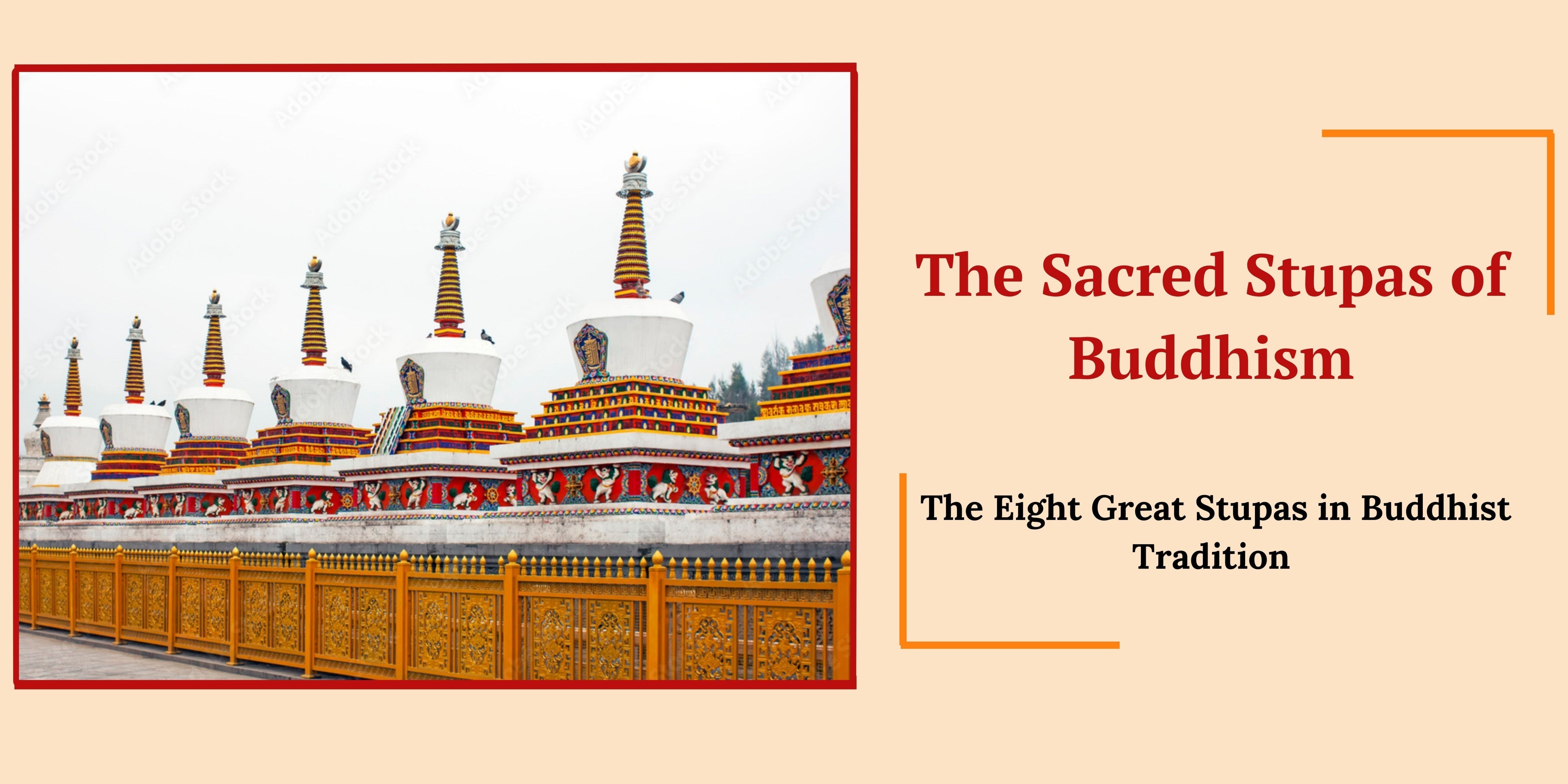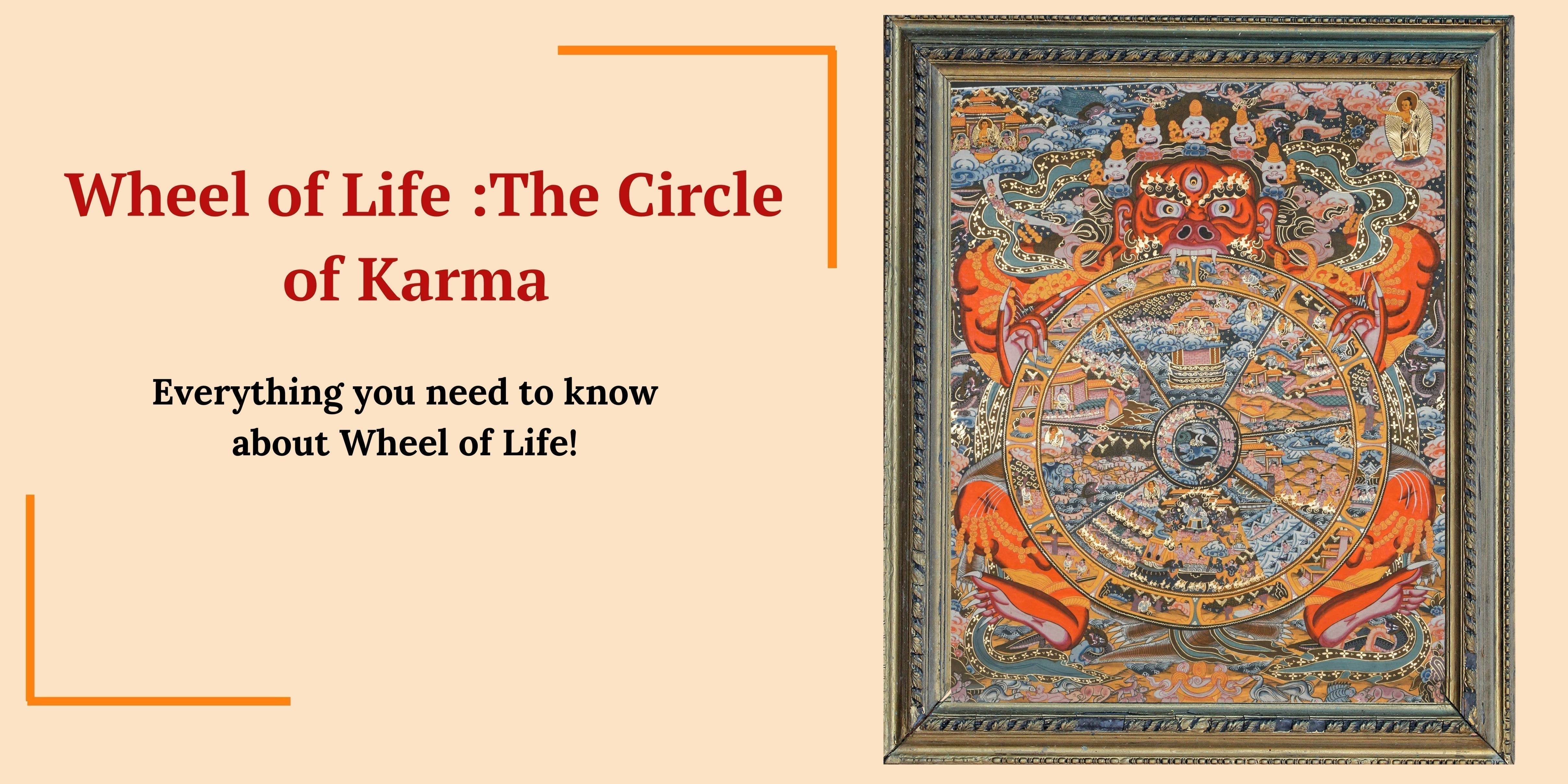
The Sacred Stupas of Buddhism: The Eight Great Stupas
What is a Stupa?
In Buddhism, even a simple mound of dirt can symbolize the Buddha or an enlightened being, but only when it takes the form of a stupa. A stupa is one of the most significant architectural structures in Buddhism, serving as a hemispherical monument that houses artefact of the Buddha or other revered masters. It is a sacred site for meditation and devotion. Often referred to as a Chaitya, the stupa has held immense ritual importance since ancient times, with devotees traditionally performing circumambulation (pradakshina) around it as an act of reverence.
The architecture of a stupa is deeply symbolic, representing the Buddha in a meditative posture, seated on a lion throne and adorned with a crown. The spire at the top symbolizes his crown, the square base of the spire represents his head, the vase-shaped dome signifies his body, the steps on the lower terrace depict his legs, and the base stands for his throne. Additionally, the five shapes of the stupa correspond to the five elements: the square base represents earth, the hemispherical dome symbolizes water, the conical spire signifies fire, the upper lotus parasol and crescent moon represent air, and the sun and dissolving point embody wisdom.

The Eight Stupas
While stupas may appear similar, there are actually eight distinct types, each commemorating a major event in the Buddha's life, from his birth to his passing into Nirvana.
1. Lotus Blossom Stupa
This stupa commemorates the birth of Siddhartha Gautama, the prince who later became the Buddha. Born in Lumbini, Nepal, in the 6th century BCE, it is said that he took seven steps in each of the four directions at birth, with lotuses blooming beneath his feet. These lotuses symbolize the Brahmaviharas: loving-kindness (metta), compassion (karuna), sympathetic joy (mudita), and calm (upekkhā). The stupa features a circular design with four steps at the base, often adorned with lotus petal motifs. Some versions include seven lotus layers, representing the Buddha's first seven steps.

2. Enlightenment Stupa
Also known as the Stupa of the Conquest of Mara, this structure symbolizes Buddha's attainment of enlightenment under the Bodhi tree in Bodh Gaya. After overcoming inner obstacles and defeating the temptations of Mara, Buddha meditated for 49 days and achieved profound realization. This stupa, with its simple rectangular design, represents his victory over worldly distractions and his awakening to the true nature of existence.

3. Stupa of many doors
Referred to as the Wisdom Stupa, this structure marks Buddha's first teaching on the Four Noble Truths in Sarnath, near Varanasi. It represents the "turning of the wheel of Dharma," in which Buddha began to share the way to enlightenment. The stupa features multiple doors and steps, representing the opening of the Dharma's teachings, including the Four Noble Truths, the Six Paramitas, the Noble Eightfold Path, and the Twelve Nidanas.

4. Stupa of Descent from the God Realm
This stupa commemorates Buddha's return to Earth after teaching his mother, Mayadevi, in the Tushita Heaven. To repay her kindness, Buddha spent three months in this celestial realm before descending back to Earth. The stupa features ladders or stairways on each side, symbolizing his return to continue teaching humanity.

5. Stupa of Great Miracles
Built to honor the miracles performed by the Buddha at Sharavasti, this stupa is also called the Stupa of Conquest of the Tirthikas, representing his display of extraordinary powers over 15 days. It was constructed in Jetavana Grove by a devotee named Lisabi and later commemorated by the Lichavi Kingdom of Nepal. The stupa has four steps with central extensions on each side.

6. Stupa of Reconciliation
This stupa symbolizes Buddha's resolution of a schism within the monastic community caused by his cousin, Devadatta. Through his wisdom, Buddha reunited the divided Sangha. The stupa's octagonal shape, with eight corners and sides, reflects this act of harmony and unity.

7. Stupa of Complete Victory
Stupa of Complete Victory also known as the All-Victorious Stupa, represents Buddha's decision to extend his life by three months at the request of a devoted follower. It is also revered for its healing properties. The stupa has a rounded shape with three steps.

8. Stupa of Nirvana
This monument also called the Paranirvana Stupa, marks the Buddha's passing into Nirvana at the age of 80 in Kushinagara. As he lays on his right side in deep meditation, he urged his disciples to continue their pursuit of enlightenment. The bell-shaped stupa, devoid of steps, symbolizes perfect wisdom and Buddha's transcendence of conditioned existence.



